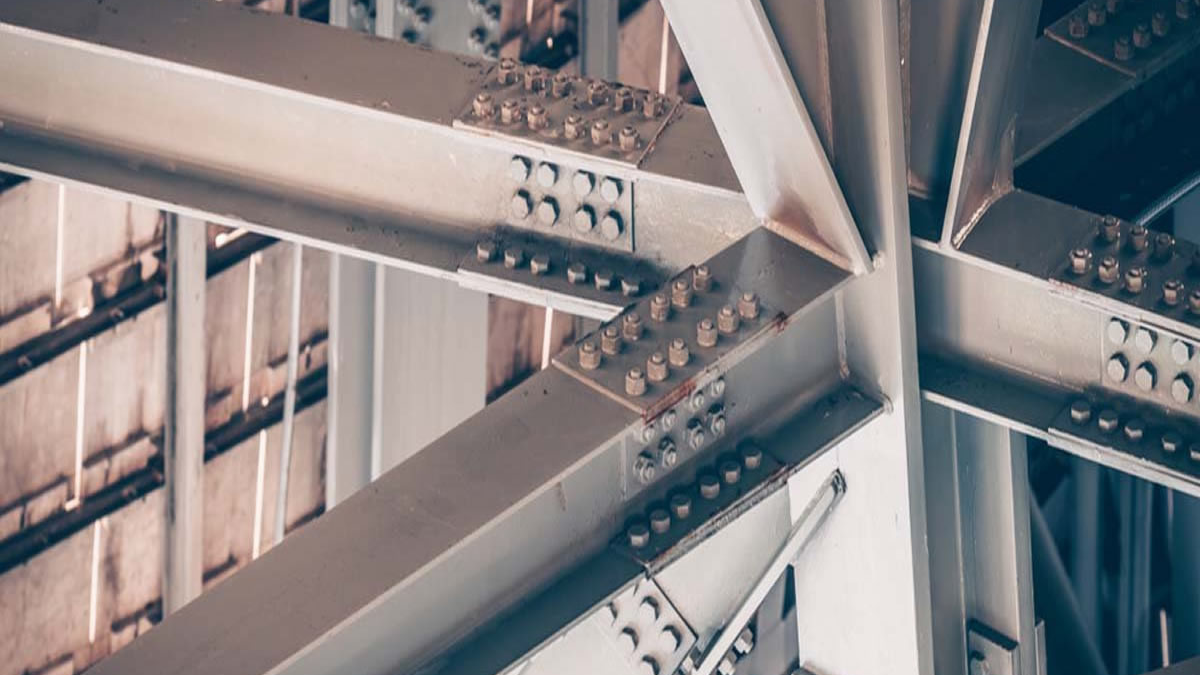Bolted and welded connections are two common methods of joining structural steel members in design and construction. When designing and assembling these structures, one crucial decision to make is whether to use a welded or bolted connection. Each method has its own set of advantages and drawbacks, and choosing the right one can significantly impact the safety, cost, and efficiency of your project. In this article, we will explore the differences between welded and bolted connections in steel structures and help you make an informed decision.
Welded Connection:

Welding is the process of fusing two pieces of steel using heat and sometimes the addition of a filler material (i.e., E70xx electrode). Welded connections have several advantages –
- Strength: Welded connections create a continuous and seamless joint, ensuring design strength and stability. This makes them ideal for critical load-bearing components in a structure.
- Aesthetics: Welded connections can provide a sleek and seamless appearance, as they do not require additional visible components like bolts.
- Space Efficiency: Welded connections typically occupy less space compared to bolted connections, which can be beneficial in tight spaces or when aesthetics are important.
- Durability: Properly executed welds can provide excellent resistance to corrosion and weathering, ensuring the longevity of the structure.
- Efficient Load Transfer: Welded connections distribute loads evenly, reducing stress concentrations in critical areas.

However, there are a few things to consider when using welded connections.
- Skilled Labor is highly important to execute welding operations. Proper welding requires skilled and certified personnel, which can increase labor costs.
- The welded connection is not flexible. Once welded, connections are difficult to disassemble or modify, limiting the structure’s adaptability for future changes and modification.
- Welded connections are costly compared to bolted connections.
Bolted Connection:

Bolted connection involves using bolts, nuts, and washers to join steel components. These connections have their own set of advantages –
- Strength and Design ability: Any steel connection can be designed using the bolted connection, whether it is a moment or a shear connection. The design strength can be achieved through bolted connections.
- Ease of Installation: Bolted connections are relatively easy to install, requiring less specialized labor.
- Reusability: Bolts can be easily removed and reused, allowing for modifications and disassembly when necessary.
- Inspection: Bolts are visible, making it easier to inspect their condition and ensure the integrity of the connection.

However, bolted connections also come with their considerations:
- In some architectural projects, bolts create aesthetic issues. The presence of bolts can be seen as a disadvantage in projects where a clean, seamless appearance is essential.
Choosing the Right Connection:
Design consideration:
When designing structural steel connections, several factors need to be considered, such as the type and magnitude of loads, the geometry and alignment of members, the serviceability and reliability of the structure, and the applicable codes and standards. You also need to balance the cost and benefits of bolted and welded connections and evaluate their suitability for your project objectives and constraints.
Construction consideration:
One of the key considerations in design is the ‘ease of construction’. When constructing structural steel connections, you need to follow the specifications and instructions of the design drawings, i.e., fabrication/erection drawing. You also need to ensure safety and quality of the workmanship, the materials, and the equipment. You also need to anticipate and resolve any issues or problems that may arise during the construction process.

Welded and bolted connections each have their pros and cons, and the decision of which to use should be based on the specific requirements of your project. While welded connections offer superior strength and durability, bolted connections provide flexibility and ease of maintenance. Ultimately, a well-informed choice between these two connection methods will ensure the safety and longevity of your steel structure.





